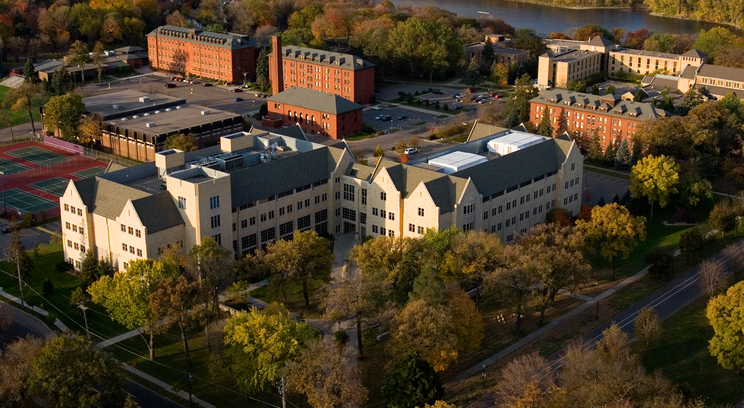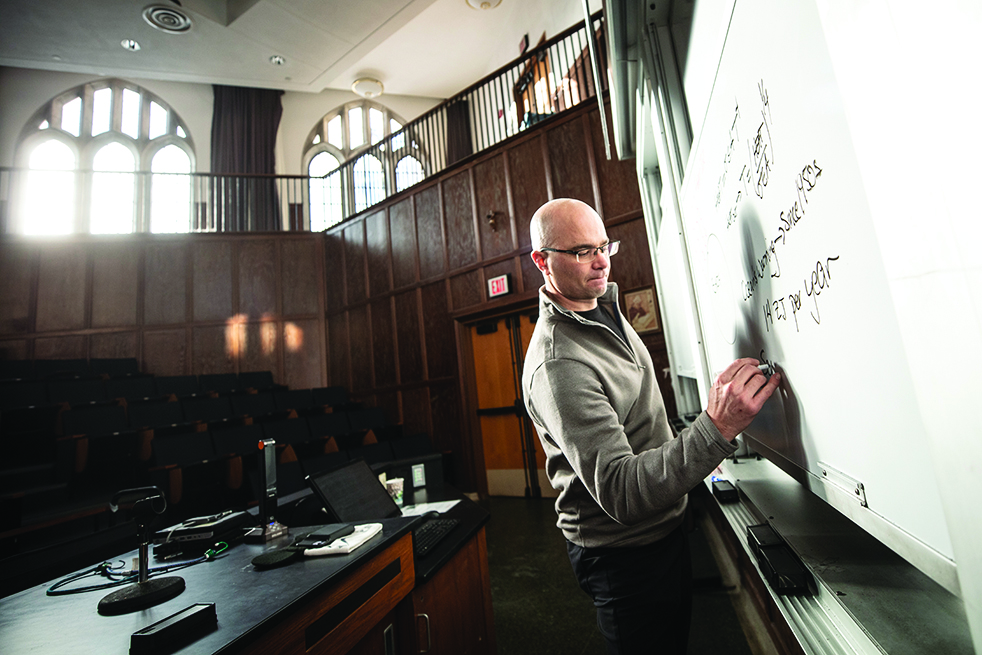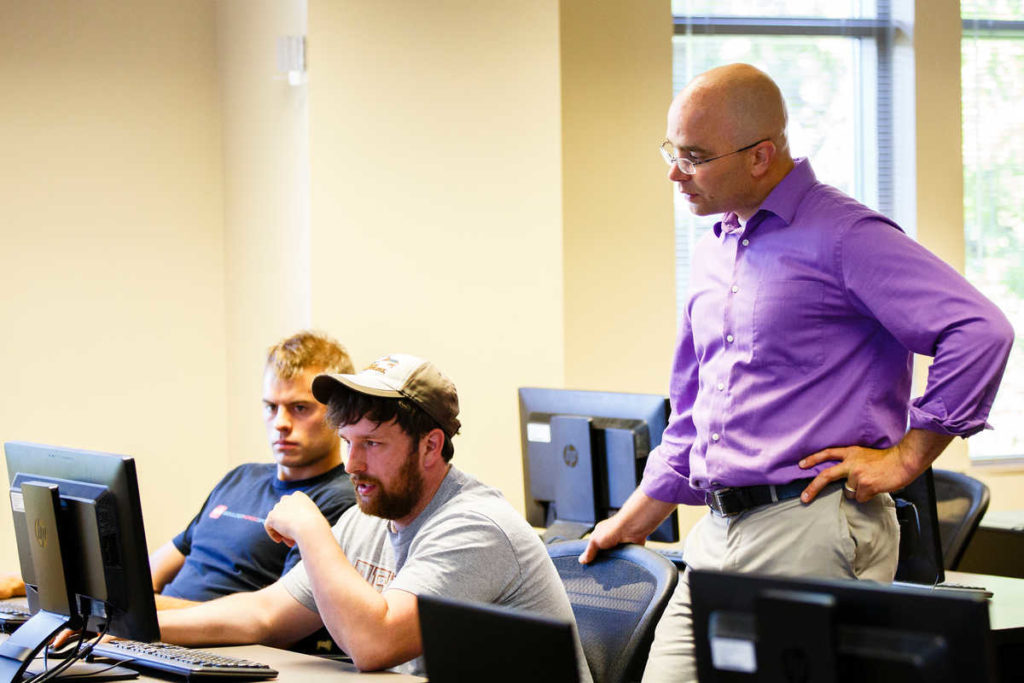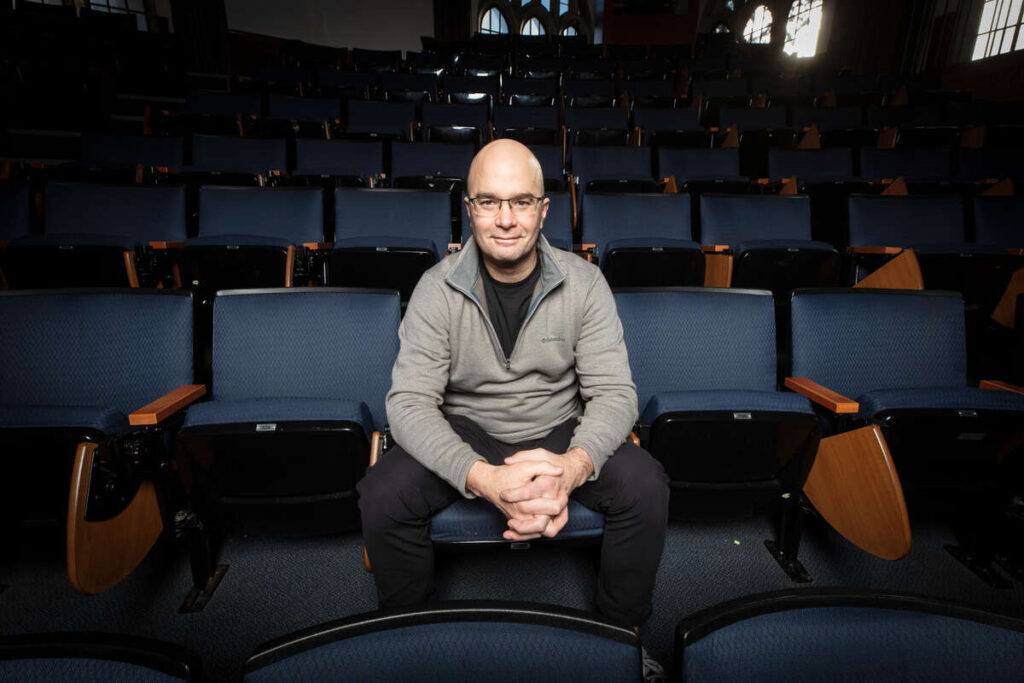The University of St. Thomas School of Engineering has received a $1.5 million grant from the Xcel Energy Renewable Development Fund to build a Microgrid Research and Testing Center. In addition to serving as a research and educational resource, an additional goal of the center is to support and encourage companies that develop renewable and alternative sources of electric power.
The St. Thomas project is one of 29 grant awards totaling $42 million announced recently by Xcel and approved by the Minnesota Public Utilities Commission (MPUC). The MPUC has asked Xcel to consider increasing the St. Thomas grant to $2.1 million.
The state-mandated grant program was created 20 years ago and is funded by Xcel customers. The grants are recommended by a seven-member advisory board and approved by the MPUC.
The St. Thomas proposal was crafted by Dr. Greg Mowry, associate professor of electrical engineering, while on a sabbatical leave last year, and Dr. Don Weinkauf, dean of the School of Engineering. Mowry has extensive industrial and power experience with microgrid systems and will oversee the center’s construction and operation. Weinkauf has led other large-scale renewable energy grants while a professor at the New Mexico Institute of Mining and Technology.
The proposal calls for the center to be located on 1.5 acres of land at the WineHaven Visitors Center near Chisago City, 35 miles northeast of the Twin Cities. Mowry anticipates that construction will begin this summer and that it will take about three years for the center to be fully operational.
Initially the center will be housed in a 60-by-80-foot prefabricated research building. The starting mix of distributed energy resources (DERs) will include 200 solar panels that will cover about the same space as a football field, a 100-f0ot-tall wind turbine that is retractable so components being tested can be easily installed or removed, two diesel gensets, and a large amount of battery storage. The microgrid facility also is designed to seamlessly expand the DER mix, such as additional fuel cells, for testing and study. Likewise, the research building will be designed for easy installation of a wide range of components brought there for analysis.
“Some microgrids operate independently in an island mode from the main power grid,” Mowry explained. “Other microgrids, which may contain a wide variety of DERs, operate in conjunction with a region’s main power grid. Companies that are developing various devices used in microgrids need to test their components to ensure they are robust, reliable and fully compatible with the main grid. Our new testing center will help facilitate that.”
He said the new center will be able to conduct control-system and device research and test components used as distributed energy resources, such as fuel cells, photovoltaics, wind turbines, energy storage methods and biofuels such as biogas and biodiesel.
“The center will offer tremendous flexibility and will be among the most accessible and comprehensive microgrid testing facilities in the country,” Mowry said.
“This is a perfect fit for our School of Engineering,” said Weinkauf. “The test center concept will bring companies, faculty and students together to explore new technologies and new markets in renewable energy.
“We envision collaborations across campus and with other universities as well. The center also will provide an ideal test facility for St. Thomas engineering students working on their company-sponsored, senior design clinic projects. There’s no doubt it will help us attract and keep top students.
“Additionally, the Xcel grant will enable energy-related, STEM learning and outreach initiatives and graduate-level research funding for our master of science degrees in electrical and mechanical engineering. The grant is a great bonus for the budding master’s program in electrical engineering, launched in 2012, which has a power emphasis.
“The microgrid center also speaks to the social purpose of engineering that we emphasize in our programs. Advancing technologies that reduce carbon emissions is critical to our good stewardship of the planet. And on an equally powerful scale, distributed-energy technologies and microgrids are at the heart of so many solutions in the developing world.”
Last spring, Xcel recognized St. Thomas as its largest wind-power purchaser through its Windsource program. The purchase of wind power is part of St. Thomas’ Climate Action Plan to become carbon neutral by 2035.
“The new Microgrid Research and Testing Center is one more example of moving this plan forward,” Weinkauf said.
Mowry, whose degrees include a Ph.D. in electrical engineering from the University of Minnesota, has been working toward realization of this microgrid test center concept for years. Over the past decade his research has centered on alternative power systems, especially hybrid power systems used in industry and developing countries. He has led student-faculty teams to help deploy hybrid energy systems in Moldova, Tanzania, and Uganda.
During his sabbatical leave last year he studied advanced power distribution methods used in smart grids and continued his research on small, reliable, alternative-energy systems used for humanitarian purposes.







